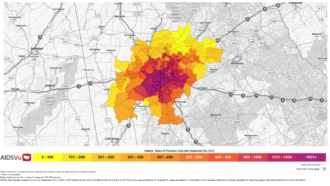The numbers tell an alarming story: How the South is the U.S. epicenter of the HIV epidemic.
Half of the new HIV diagnoses occur in the South, as well as half of the AIDS-related deaths. And the region has just one-third of the U.S. population.
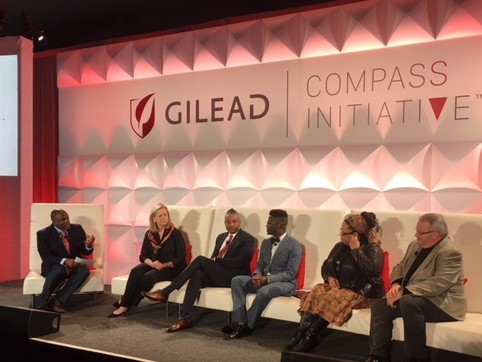
Eight of the 10 states with the highest rates of new HIV diagnoses are in the South, as are the 10 metropolitan statistical areas with the highest rates. Metro Atlanta has the fifth-highest rate of new infections.
Gilead Sciences, maker of HIV medications, has cited those statistics in its launch of a $100 million, 10-year initiative to fight the disease in the region.
The COMPASS program’s mission is to build capacity among underfunded community-based organizations in the South; to support groups that provide care to those in need; and to fund awareness, education and anti-stigma campaigns that will make it easier for people to access prevention and treatment.
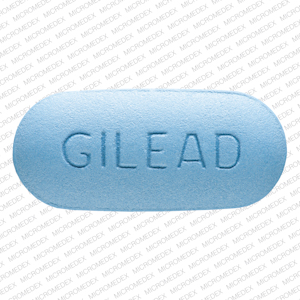
Emory University Rollins School of Public Health, along with the University of Houston Graduate College of Social Work and the Southern AIDS Coalition, will identify and provide funding to the local organizations. Gilead convened stakeholders at the Georgia Aquarium on Tuesday to discuss the HIV work ahead.
“The epidemic is clearly disproportionately affecting the South, ‘’ said Patrick Sullivan, an Emory University expert on HIV/AIDS. And he noted it’s not just a problem in the major cities, but also has a significant presence in more rural areas.
Gilead makes several HIV drugs. They include Truvada, used in a daily regimen known as PrEP, or pre-exposure prophylaxis, that can help shield healthy, HIV-negative people from infection if they are exposed to the virus through sexual activity or drug use.
The company says the Southern initiative is not designed to induce or reward use of Gilead medicines.
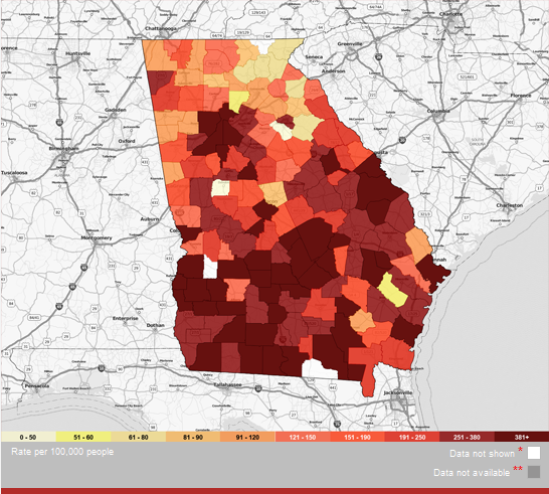
Georgia itself has an estimated 47,000 people living with HIV, and roughly 2,300 new diagnoses each year. Seventy percent of the HIV patients are African-American. Most of the cases are in metro Atlanta.
Sullivan told GHN there are many factors that lead the South to have a high HIV burden. They include the region’s high poverty and uninsured rates; problems in access to health care; the stigma attached to the disease; income inequality; and the persistently high rate of sexually transmitted infections.
There’s a strong racial component as well. In Georgia, the HIV prevalence rate among black males is 5.8 times that of white males, and the HIV prevalence rate among Hispanic/Latinos is 1.9 times that of white males. And the HIV prevalence rate among black females is 12.6 that of white females.
A panel on HIV/AIDS on Tuesday discussed the role of religion in the South and the stigma surrounding the disease, and how it can pose a hurdle to proper care. Activists say the fear of being stigmatized is killing some people, causing them not to confront the reality of HIV infection.
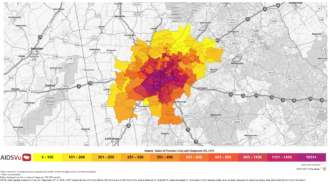
Faith-based initiatives should lead to more understanding of HIV/AIDS, panelists said.
“I’m still doing eulogies’’ for AIDS victims, said Bishop O.C. Allen of the Vision Church of Atlanta. “I’m happy to provide a safe place for people.”
Larry Lehman of Positive Impact Health Centers said thousands of people locally with HIV diagnosis are not taking anti-retroviral medication, or are “out of care.’’ Lehman said. “We’re seeing a huge number of very young [adults] with full-blown AIDS.’’
These numbers, he added, are ‘’very, very alarming.’’ He said more funding is needed for treatment and fighting stigmatization of those affected, and he urged new laws to allow teenagers in Georgia to receive PrEP.
The Gilead initiative, Lehman said, “is a huge change in the game for all of us.’’

